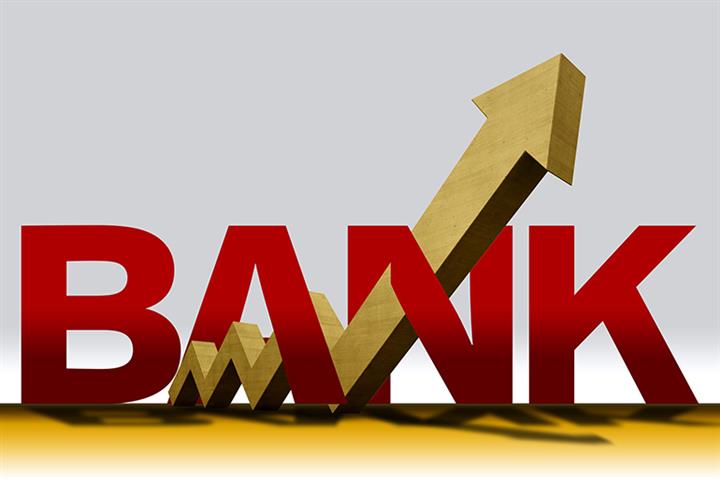 Bank of Hangzhou, Three Other Chinese City Banks See Profits Soar Over 20% in First Half
Bank of Hangzhou, Three Other Chinese City Banks See Profits Soar Over 20% in First Half(Yicai Global) July 12 -- Net profit at Bank of Hangzhou, Bank of Nanjing, Bank of Wuxi and Suzhou Rural Commercial Bank all jumped by over 20 percent in the first six months from the same period last year, on strong lending and better asset quality, despite the impact of the latest waves of Covid-19.
Bank of Hangzhou was the best performer with a 31.5 percent surge in profit and 16.2 percent jump in revenue in the six months ended June 30 from a year earlier, according to its latest earnings report. The lender, based in the capital of eastern Zhejiang province, put its stellar performance down to good cost control. The other three all had profit growth of over 20 percent and revenue growth of over 6.5 percent.
The three city commercial banks and one rural lender, which are all located along China’s economically developed eastern coast, are the first so far to announce their first-half performance, raising investors’ hopes that other banks have done equally well.
"These four banks have shown strong resilience," a banking analyst at a brokerage in Beijing said. “They have increased credit allocation to maintain steady growth in asset size, but have also remained committed to controlling costs on the liability side, optimizing their business structure and improving operational efficiency.”
The Bank of Hangzhou, for example, extended 22.5 percent more loans at the end of June from the same period last year, 1.1 percentage point higher than March’s growth rate. Such infrastructure loans have played a key role in the lender’s credit placement expansion, said Guo Qiwei, an analyst at Tianfeng Securities.
At the same time, the asset quality of these four banks has improved, with their non-performing loan ratios falling. Their NPL ratios ranged from 0.79 percent to 0.95 percent at the end of June, dipping 0.01 to 0.07 percentage point from the beginning of the year.
Compared with the first quarter, Bank of Hangzhou, Suzhou Rural Commercial Bank and Bank of Wuxi’s first-half profit growth rate improved on the first three months, but that of the Bank of Nanjing was slightly less.
The banking industry as a whole is expected to have slower revenue growth in the second quarter than in the first due to the flare-ups, the Beijing analyst said.
"The second quarter was a period of relatively high operating pressure, so there is still room for improvement in the second half of the year, especially in terms of credit placement," an executive at an urban bank told Yicai Global.
Banks are expected to maintain high growth earning rates and solid asset quality as economic recovery accelerates, corporate performance improves, borrowing costs stabilize and efficiency increases, said Everbright Bank analyst Zhou Maohua.
Donghai Securities analyst Wang Hongxing said he is confident about the industry’s performance in the second quarter. The significant increase in scale and the resilience of asset quality will be a substantial buffer against the pressures brought about by the interest rate cuts.
The second quarter may be a low point for full-year revenue and profit margins, however but in the context of the country’s ‘stable growth’ policy, credit and social financing will rebound and banks’ performance is expected to continue to improve, Wang said.
Editors: Tang Shihua, Kim Taylor